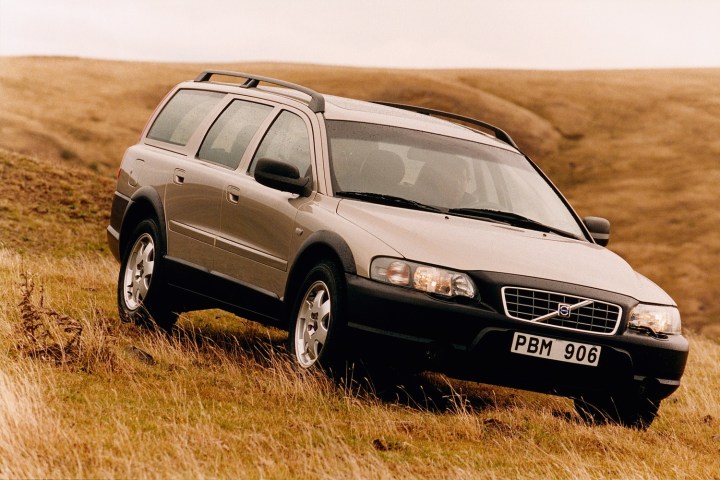
The Cross Country tradition will continue with Volvo’s latest wagon. A V90 Cross Country will be revealed later this month, Volvo confirmed in a press release. Like previous models, the V90 Cross Country probably won’t differ mechanically from other V90 variants, but it will have a tougher look meant to woo SUV shoppers.
That tactic has worked pretty well for Volvo over the past 20 years. The first-generation Cross Country, known as the V70 XC and based on the V70 wagon, was devised as a way to keep sales of Volvo’s staple product strong in the face of rising SUV popularity. The availability of all-wheel drive made Cross Country wagons harbingers of the modern car-based crossover SUV.
Read more: Check out Volvo’s record-smashing, 2,400-hp truck
The V90 Cross Country will likely replace the current XC70 model, which is based on an older platform shared with the outgoing S80 sedan. Volvo also offers a Cross Country version of the smaller V60 wagon, and even gave the S60 sedan the Cross Country treatment. The “60” models will be redesigned soon, moving to the same Scalable Product Architecture (SPA) platform as the V90.
Powertrain offerings on the V90 Cross Country will likely mirror those of the standard V90, which is offered exclusively with four-cylinder engines. The T5 version uses a turbocharged 2.0-liter engine, while the T6 gets a 2.0-liter that is both turbocharged and supercharged. Finally, the T8 “Twin Engine” marries the T6 engine to a plug-in hybrid system. Expect all-wheel drive to be available on the Cross Country, if not mandatory.
Since the standard V90 doesn’t go on sale in the U.S. until sometime next year, don’t expect the Cross Country to appear in showrooms for awhile. But Volvo plans to reveal the wagon later this month, so check back soon for more details.


